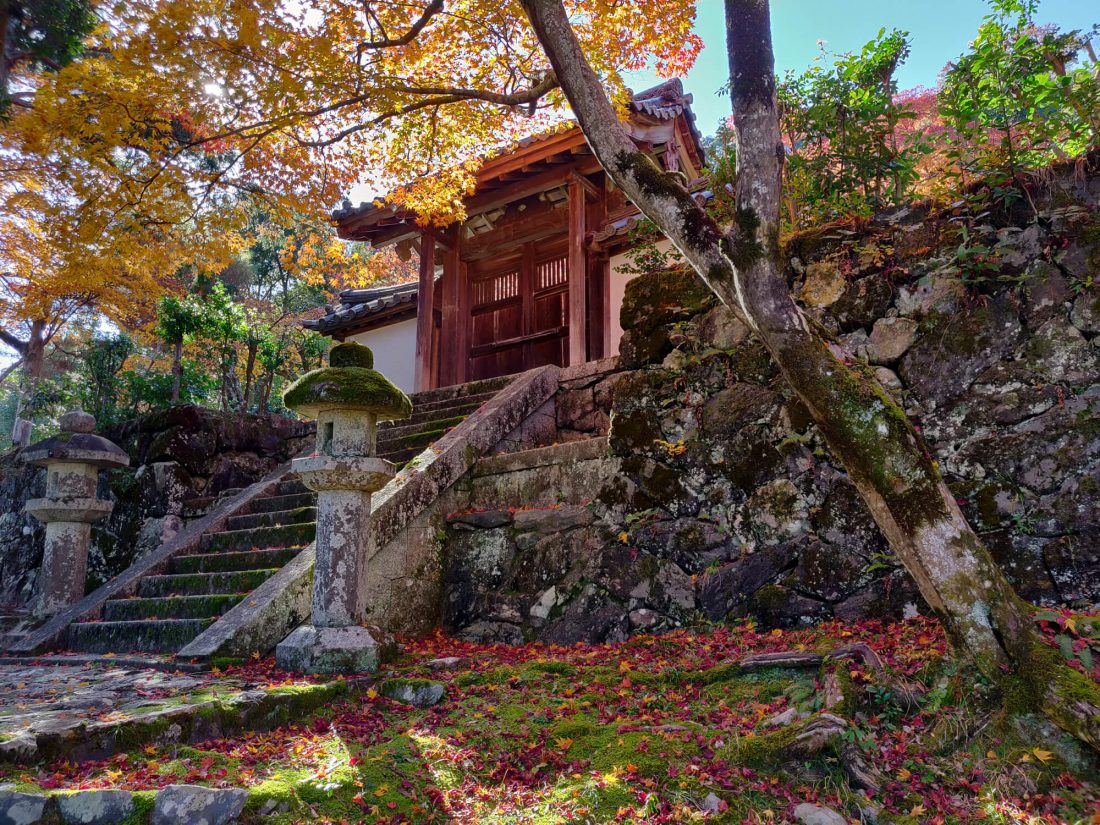Located at the foot of Mount Ogura in Kyoto, the Nison-in temple is renowned for its fall colours. Built between 834 and 847, its original structure was burnt down during the Onin War (1467-1477). It is a relatively uncrowded temple, a quiet place to escape the crowds of Arashiyama.
Momiji-no-baba
After going through the main gate, a long, straight path leads t the temple entrance. In autumn, the path, bordered by maple and cherry trees, creates a beautiful red and yellow tunnel effect. Another face awaits visitors every season: pink in spring, green in summer and white in winter.


The imperial messenger‘s gate
This door, now accessible to visitors, was only open for the emperor’s messengers.


Mausoleum of the Priest Tanku
At the top of the stairs is the mausoleum of the priest Tanku who taught Nison-in. Its structure dates from the end of the Muromachi era (1336 to 1573).

Cemetery
A large number of tombs of emperors and court nobles demonstrates the prestige of the temple. The cemetery contains the ashes of the emperors Tsuchimikado, Go-Saga and Kameyama. The levels are all linked to each other.

As you can see in the pictures, the place was peaceful. In fact, most people stayed around the main temple structure!





I recommend visiting Nison-in temple. It stands out from the rest of the temples of Kyoto. The fact that it is not (yet!) on the way of tourist groups makes it a special place. See also the article dedicated to the temples of Kyoto: visit of twenty temples annotated according to their interest and experience on the spot.
Access to Nison-in
Nison-in is a little remote and poorly served by public transport. Allow around 15 minutes on foot from JR Saga Arashiyama station (嵯峨 嵐山).
Official site of the temple: nisonin.jp (Japanese and English)
Admission: ¥ 500
Address: 27 Monzenchojin-cho, Saga Nison-in, Ukyo-ku




